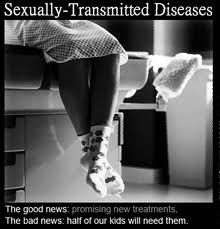Having an unplanned pregnancy while in high school requires major life choices, including whether to drop out of high school. The pregnant teen drop out rate in the U.S. is alarming. Keep reading for statistics on drop out rates, risk factors for pregnant teenagers, and options for these teens. Pregnant teens in high school have a very high drop out rate, though the exact percentage varies by location. Though pregnant teens have many reasons for wanting to drop out, it’s important for their own well being as well as that of their babies for them to complete their education. A good support system is extremely important in helping pregnant teens finish school.
While the number of pregnant teens has declined over the past decade, in the last couple of years the numbers have started to go up a little. Increased numbers of pregnant teens mean increased numbers of teens dropping out of school, so it’s best to help teens embrace abstinence or use birth control to reduce the risk of pregnancy.
The statistics on the pregnant teen drop out rate are alarming:
- Though nearly 1 million teens get pregnant every year, that number includes teens who are 18 and 19. Teens who are high school age, however, still get pregnant at a rate of about 22 per 1000 students every year.
- Around 70 percent of pregnant teens drop out of high school, which is a much higher number than the drop out rate for teens who do not become pregnant.
- Overall, 1 in 4 teen girls does not complete high school in the allotted 4 years. These numbers are higher for minority girls, where up to 50 percent of them don’t finish high school in some areas.
- At least a third of girls who drop out do so because of teen pregnancy.
- Latina teens have the highest drop out rate among pregnant teens.
- The rates of high school dropouts vary significantly, with Utah having the lowest drop out rate, and Georgia having the highest.
- Only half of pregnant teen girls who drop out of high school are employed, and those who are employed make significantly less than those who finish high school. Considering that females already usually earn less than males, a female who drops out of high school has a very negative economic outlook for her life.
Pregnant teens have many pressures that may cause them to drop out of high school:
- Dealing with morning sickness and other side effects of pregnancy
- Feeling insecure about their changing appearance
- Stigmas against pregnant teens from their peers as well as teachers, administrators, and other students’ parents
- Being subjected to bullying or sexual harassment
- Inadequate support or encouragement to stay in school
- Lack of day care after the baby is born
- Needing to find a job to support their new baby
- Multiple pregnancies during their teen years
Among pregnant teens, there are some other risk factors that increase the chances that a pregnant teen will drop out:
- Low income
- Poor academic performance
- Lack of support, especially from parents
- Speaking English as a second language
- Being raised by a single parent
- Having a parent who did not finish high school
Pregnant teens who drop out of school have fewer opportunities for themselves, and their children are also less likely to succeed in school or careers. For this reason, it is important to support and encourage pregnant teens in getting their education. In addition to traditional high school, there are also some other options for pregnant teens in some areas:
- Special schools for pregnant or parent teens
- Tutoring or home school programs to help pregnant teens finish school
- Accredited online high school programs
- Night school
- Getting a GED
Some of the most important things to help pregnant teens finish school are information and support. Teens need someone to tell them about the importance of finishing their education and what options they have to do so. They also need someone to encourage them through the hard times and help them reach their goal. This support can come from a number of sources:
- Parents
- Teachers
- School counselors
- Social workers
- Peer support groups
The support needs to continue after the baby is born if the teen chooses not to put the baby up for adoption, since it is extremely challenging for teens to meet the demands of school as well as the demands of motherhood. In addition, teens may need help developing their sense of self worth and finding goals for themselves that they can pursue in addition to motherhood, such going to college or trade school to get skills and pursue a career.
Having support from adults who can give them guidance and listen to their concerns as well as peers who can keep them from feeling as socially isolated can help teens avoid dropping out of high school, which gives them and their babies a better chance of success in life. This affects not only the girls and their children, but also society, which pays the cost of teen pregnancy through lowered productivity, higher numbers of people dependant on welfare, and more young people with health or behavior problems. Support should also focus on helping them avoid getting pregnant again.
Many schools find it difficult to find the best way to help pregnant teens, however, because, while they should not punish teens for getting pregnant, they also should not encourage or condone teen pregnancy, such as by having baby showers at school. Also, it’s important that being supportive does not mean taking away academic expectations or challenges. Pregnant teens should still be expected to work hard and get a good education, but some understanding should be exhibited toward their unique challenges, such as the need for child care and the health problems they may experience.
Sources:
Walden University, ConnectEd Issues in Education, “How Many Pregnant Teens Drop Out of High School?” [online]
National Women’s Law Center, “When Girls Don’t Graduate, We All Fail” [online]
Andrea Orr, Edutopia, “Dealing with Pregnant Teens Is a Balancing Act for Schools” [online]
LiveStrong, “Teen Pregnancy Rates in the USA” [online]



